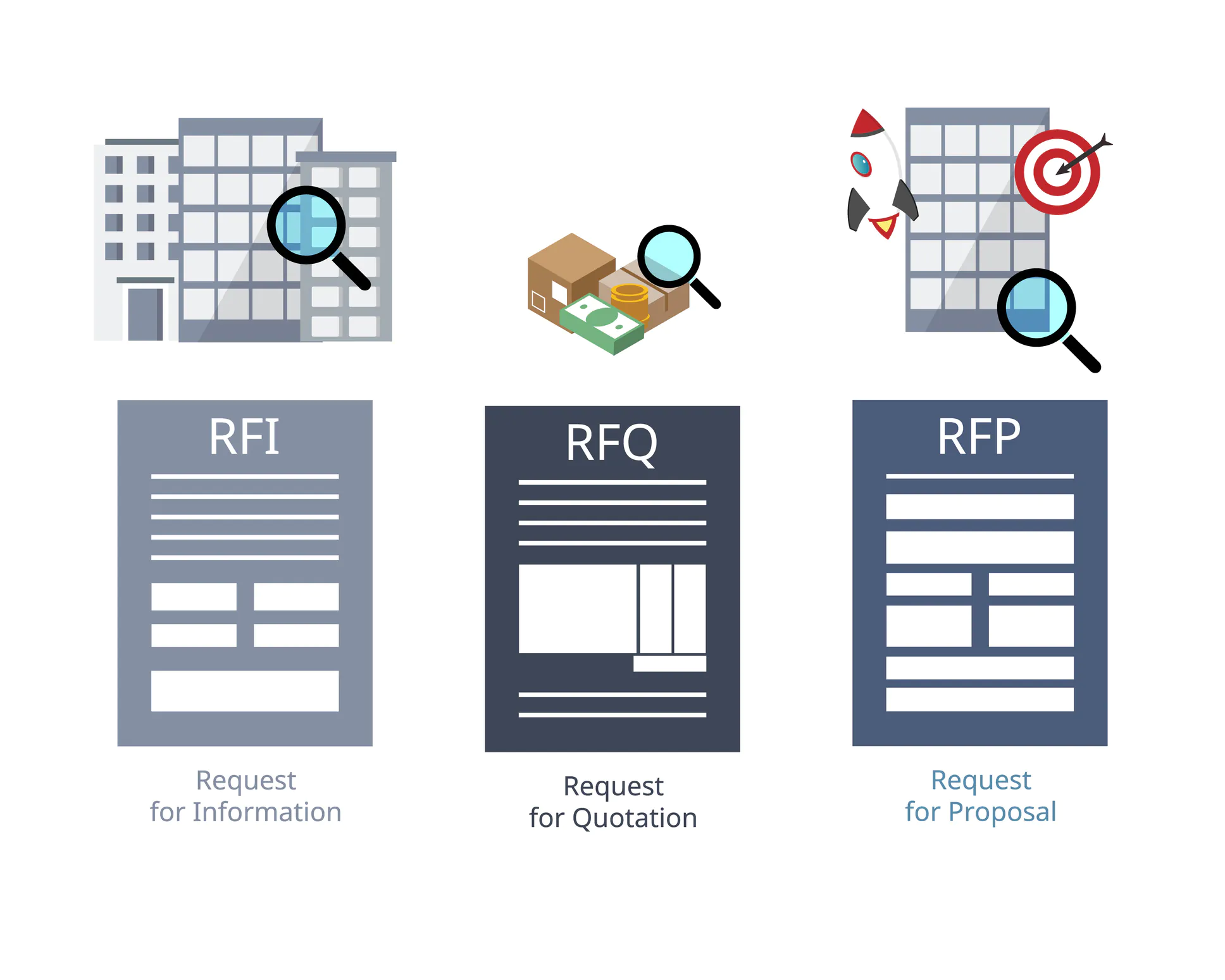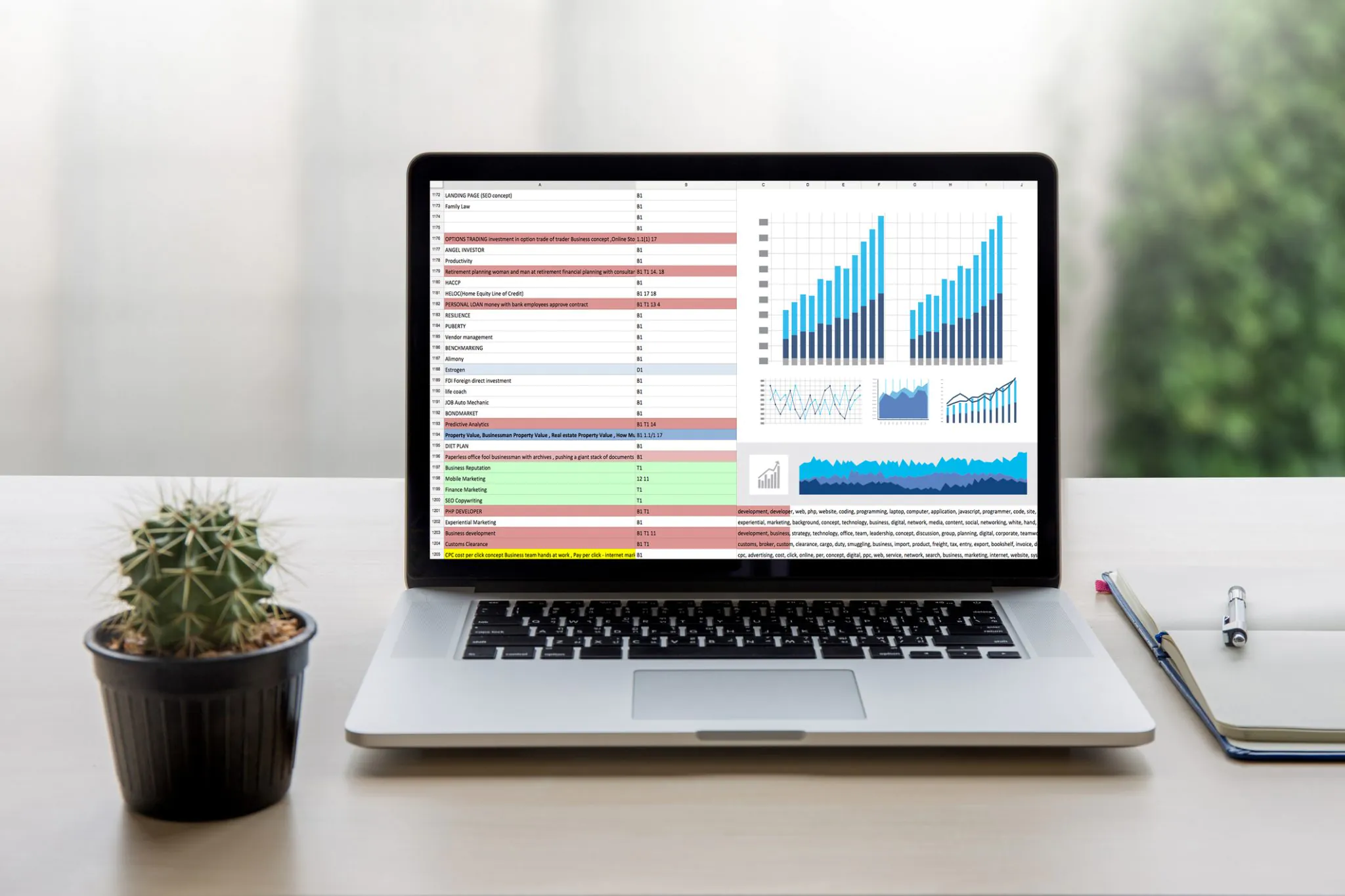This is the ultimate RFI guide in 2023, walking you through the top RFI templates, samples, and more. Before you send out your Request For Information (RFI) template, it is important to understand the basics of this business tool. Your RFI template is a vital piece of your future business endeavors and communicating with vendors who can assist you in achieving your goals.
Creating a request for information (RFI) is an excellent way to get the information you need to move forward with a certain project, program, or initiative. It can be challenging to create an RFI, however. There are lots of questions to be answered and many people want to see the information provided in different ways.
This post will provide a complete overview of RFIs. To start, we’ll provide important basics including the meaning of an RFI, its purpose, and who issues them. Next, we will offer advice about how to write an RFI effectively. We’ll also share tips and best practices and provide helpful RFI templates (all-around and industry-specific RFI examples) that you should be using in 2023. Finally, we’ll provide examples of RFI documents that you can use as models for your own RFI. This information will help you quickly create a document that delivers valuable insights.
Use BizVibe to turn RFPs and RFIs into professional proposals that win deals.
Learn More
-
What is an RFI?
-
What is the RFI Process in 2023?
-
The 3-Step RFI Process
-
RFIs Explained: How to Write an RFI in 2023
-
Sample RFI Templates
-
RFI Examples: Industry-specific RFI Templates
-
RFI Tips
-
Streamline Your RFI Templates and the RFI Process
What is an RFI
What is an RFI document and what are the steps to creating an effective RFI document?
An RFI is usually one of two: RFQ (Request for Qualifications) or RFP (Request for Proposal) — which are documents that are sent to contractors and suppliers to receive their responses. It contains all the details of the project, including a description of the services, time frame, cost, and payment terms. The contractor or supplier must provide a detailed proposal in response to the RFQ/RFP document.
The purpose of this document is to determine which contractor or supplier has the best qualifications for your project. You want someone who has experience with similar projects and can deliver quality results on time and within budget.
To create an effective RFQ/RFP document you should follow these steps:
- Review all previous proposals from contractors/suppliers that you have used in the past or received from others who have used them. Look at how long it took them to respond to this type of request, how thorough their response was, whether they provided any samples of previous work done, and how much they charged for their services.
- Determine what you need to be done and what resources you have available at your company that can be used in completing this project. Make sure
An RFI document is used to gather information from three different sources:
- Customers
- Vendors
- Suppliers
The RFI document is sent to each of these groups and they are asked to provide answers. The responses you receive can help you make decisions about the future of your business by providing you with valuable information about what your customers want, how much they are willing to pay for it, and how well your competitors are doing in the marketplace. This can help you make better decisions about what products and services to offer as well as how much money to spend on marketing campaigns and other initiatives for your company.
What is the RFI Process in 2023?
What is the RFI Process in 2023? The Request for Information (RFI) process is used to gather information from suppliers on a particular product or service. It is a formal way of asking for information from the supplier. The RFI process helps to verify the availability of a product, determine the price and delivery schedule and identify potential risks associated with supplying the product or service.
This is an effective way for companies to make decisions on whether or not to continue with a particular project.
When should you use an RFI process?
The RFI process can be used at any time during your business development process, but it is most commonly used early on when buying new equipment or software systems that you want to integrate into your company. For example, if you are planning on buying new servers for your data center, it would be beneficial to get quotes from different manufacturers before making a decision about which ones to purchase. This will allow you to compare prices between different vendors and narrow down your choices based on price alone. In this case, an RFI will help uncover any hidden costs associated with purchasing servers from each vendor as well as give you more information about what type of server meets all of your needs so that there are no surprises when it comes time
The 3-Step RFI Process
Step 1. The RFI Process: Creation
The first step in creating an RFI is deciding what you’re looking for. This can be done through internal meetings, where managers discuss what they want and how they want it done. They can also consider what other companies have done in similar scenarios and what they liked or disliked about those solutions.
This document should include all relevant information about your project or product requirements, including but not limited to:
- What type of product or service are you looking for?
- What is the timeline for this product or service?
- How much time do you have to evaluate bids?
- Who will be reviewing bids?
Step 2. The RFI Process: Administration
Once you have decided on what you want, you need to decide who should receive your RFIs. You may choose to send them out to a few suppliers or many of them at once. You may also decide whether or not to include all possible suppliers at this stage or only those who have previous experience in similar situations (for example, if you need a new software program). You can email it out to prospective vendors or post it on an online marketplace like Alibaba. The goal here is to ensure that anyone who might be interested in providing what you need has access to the document so they can respond with any questions or concerns they might have.
Step 3. The RFI Process: Evaluation Process
Review vendor responses for viability
The third step in the RFI process is to evaluate each vendor’s response. This step can be challenging because you need to determine if their proposal is viable and meets your needs. If a vendor’s proposal is not viable or doesn’t meet your requirements, it should be eliminated from consideration. However, if they are a good fit, you can continue to the next phase of the RFP process.
Compare vendor offerings, consider the following:
Vendor selection criteria
The evaluation process begins with a careful review of the RFIs to determine whether they are clear and complete. Then, you should evaluate each vendor’s response against the RFI requirements. In addition, you should consider the following factors as part of your decision-making process:
- Can you communicate clearly with the vendor?
- Does the vendor have a good reputation in the industry?
- What is the company’s size, experience, and financial stability?
- What are the company’s track record and references?
- What are its resources? Do they have all of them on staff or will they subcontract some workouts? Is there any outsourcing involved? How much? Where will it be done? How long has this company been in business? What kind of customers does it have now? What kinds of projects does the company take on?
Consult stakeholders on findings
In this step, the team evaluates the responses received from stakeholders. This evaluation is based on three criteria: feasibility, affordability, and impact. These criteria are used to determine how each solution will work within your organization’s unique context, as well as its potential impact on your organization’s goals and objectives.
It’s important to remember that there is no one-size-fits-all solution when it comes to implementing an RFI process, so you must evaluate all feedback given by stakeholders carefully before making any final decisions about which solutions you want to pursue further or implement immediately.
RFIs Explained: How to Write an RFI in 2023
What should be included in an RFI?
An RFI is one of the most effective ways to get a sense of what your customers want and need. It can also help you make decisions about which technologies or vendors to pursue.
An RFI is a request for information that’s sent out to various vendors or consultants who might be able to provide the solution you’re looking for. The purpose of an RFI is to gather information from multiple sources so that you can compare their answers before deciding which one is best. Once you’ve gathered all of this data, it’s time to move on to the next step: creating a short list of options for further review.
Here’s how to write an RFI that gets you the information you need.
Sample RFI Templates
The following is a sample request for information (RFI) template that can be used by a buyer to gather information from suppliers. The request should describe the product or service that is being requested, any required specifications, and the date by which the information is needed.
Let’s start with an all-around- sample RFI template that will work with many use-cases.
.
Sample Request for Information
[Company Name], [Address]
[Date]
To: [Name], [Title], [Company Name], [Address]
Subject: Request for Information
Dear [Name]:
We are in the process of developing an RFP for service Y/product X. To ensure that we get the best pricing possible, we need your help in gathering information about your company’s capabilities. We would appreciate it if you would send us a detailed description of how your company would perform this work should we contract with you. Please include pricing information as well as any other relevant details that may help determine whether or not your firm can meet our needs. We would like to receive this information no later than January 15th so that we may include it in our final RFP document. If you have any questions or need more specific instructions on what we are looking for please do not hesitate to contact me directly at extension 321.
The RFI template is the document that you use to send to your vendors and partners. It’s essentially a list of questions and the corresponding responses, but it can also be used for other purposes. You can use this template to gather information about potential vendors and partners, as well as track your progress on future projects.
The best RFI template is one that can be customized to suit your needs and goals. Many software companies offer templates, but they aren’t all created equal. Some are better than others, and some are more useful than others.
Use BizVibe to turn RFPs and RFIs into professional proposals that win deals.
RFI Examples: Industry-specific RFI Templates
RFP Template for Construction Projects
How to Write an RFI for Construction Projects: This RFP (Request For Proposal) template is a comprehensive list of questions that contractors should be able to answer if they wish to be considered for your project.
RFP Template for IT Services
How to Write an RFI for IT Services: This RFP template is designed to help you select a company that can provide the best solution for your IT needs. It covers all aspects of IT services including hardware, software, network security, and maintenance.
RFP Template for Marketing Campaigns
How to Write an RFI for Marketing Campaigns: This RFP template is designed to help companies select a marketing agency that has experience with specific campaigns such as social media marketing campaigns or print advertising campaigns.
Best All-Around RFI Template
Here are a few things you should look for when choosing an RFI template:
The best RFI templates are customizable. You should be able to change the wording of each question so it fits with your business needs and goals.
Some templates allow users to add additional questions if needed, which is particularly useful if you want to ask specific questions that aren’t covered by the template itself.
The format should be easy to understand. If you’re sending this document electronically, make sure there aren’t any formatting problems that might cause confusion or errors during transmission – otherwise, it might not get where it needs to go!
Tips for Creating an Effective Request for Information (RFI) Document and Template
A request for Information (RFI) is a document that organizations use to gather information from different vendors. This document will help you decide which vendor to choose.
Here are some tips to create an effective Request for Information (RFI) document:
- Keep it short and simple. Make sure the questions in your RFI are clear, concise, and easy to understand. If you can’t explain your question in one sentence, then it’s too complicated and should be reworked.
- Be specific about what you need information on and how much detail you need in each area of the project or product offered by each vendor.
- Use bullet points instead of paragraphs when possible so that your recipients can scan through the document quickly without getting bored or confused by long paragraphs or sentences with lots of commas and semicolons in them!
- Include a cover page with contact information so that vendors know to who they’re sending their responses immediately upon opening the email attachment containing your RFI request! You can also include instructions on how to submit their proposal electronically as well as in hard copy formats if required by your organization or departmental policies or procedures! It’s also helpful if you include instructions on where.
Streamline Your RFI Templates and the RFI Process
Writing an RFI can be quite a long and complicated process, especially when you are working with multiple entities. Many RFI writers I have worked with have been unsure of whether they have been successful. To help anyone in that situation, below you will find what I feel are the most common reasons why an RFI was successful, as well as some effective methods to ensure your RFI meets your goals!
BizVibe is a company that helps you create professional proposal documents using customizable and ready-to-use templates. Quickly create professional proposal documents using customizable and ready-to-use RFI templates. Receive intelligent alerts on upcoming RFPs so you can be notified before your competition.



